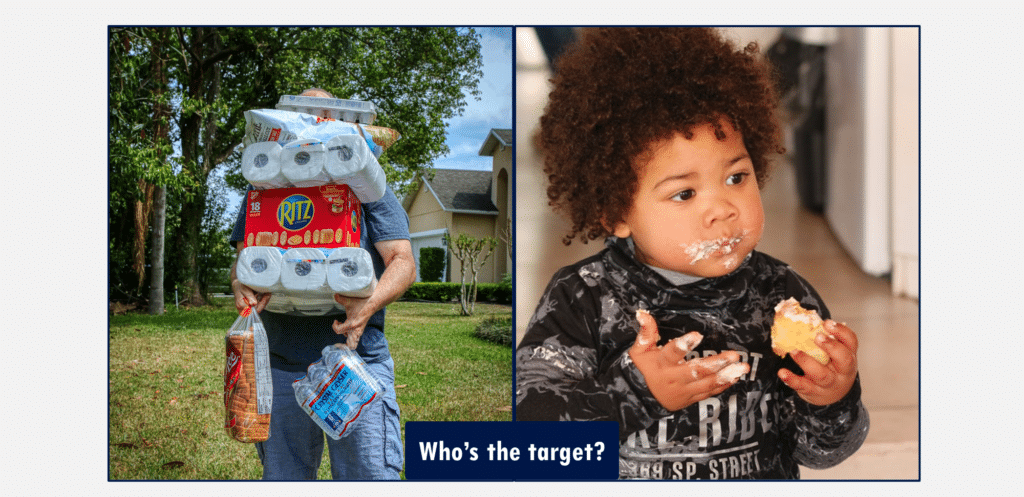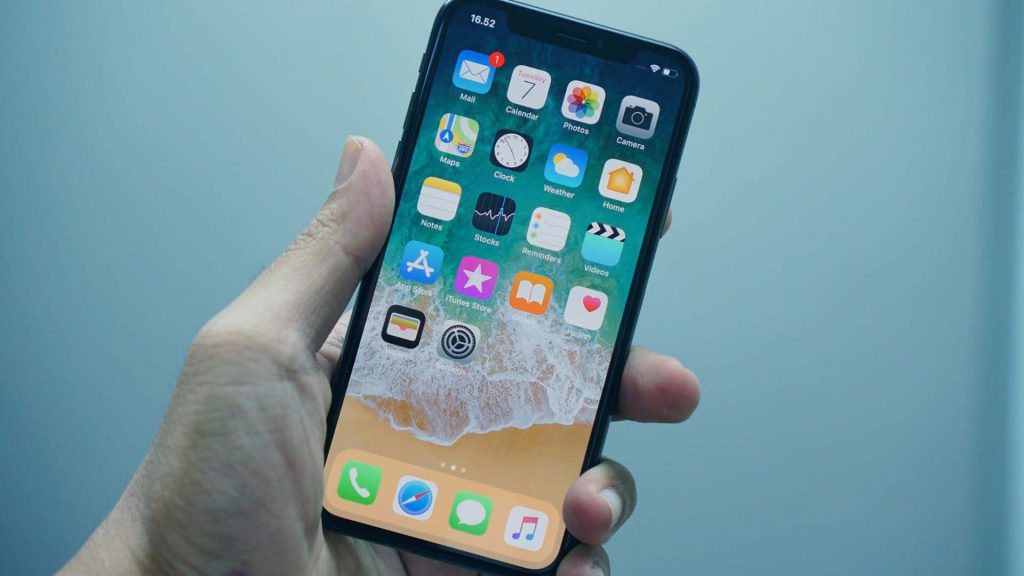In an era where digital is becoming pervasive, online shopping is becoming more and more frequent. Traditional brick-and-mortar retailers are fighting back against the internet’s efficiency and practicality with the proposition of an emotionally engaging shopping experience that is hard to replicate online. At the same time, FMCG manufacturers want to leverage the moment when shoppers are in front of the shelf for maximum effect (“moment of truth”) by being able to trigger the purchase with the right message, in the right place, at the right time, to the right target.
Who is the target?
In many cases, the shopper is not the same person as the consumer such as is often the case with baby food, snacks, cereals, medicines, alcohol, and in some cases, even cars. In these instances, it becomes more difficult to create an inside-the-store communication that is simultaneously in line with what we are already communicating to potential consumers outside the store. So, who do we target?

The connection between consumers and shoppers is based on the fact that, in the end, they are human beings. Thus, our starting point is always using a segmentation model that is based on human behavior. In both cases (shoppers and consumers) we need to see who can be the most aspirational segment that will help increase our sales exponentially.

In order to achieve the highest communication impact, we have to make sure that anything that we communicate inside the store is also aligned with the communications we employ outside the selling environment. The purpose of the shopper strategy is to fully connect Consumer-Retailer-Shopper not only on a functional and demographic level but most importantly on a lifestyle and emotional level. Here we will focus on the shopper strategy and how we link it with the brand positioning strategy and with the consumer target.
4 STEPS TO BUILD A SUCCESSFUL SHOPPER STRATEGY

STEP 1 – WHO?
Shopper Targeting
Targeting the right shoppers is the first big step for a successful retail marketing strategy; the goal is to focus not just on buyers of the brand, but more specifically, those buyers that disproportionately influence other users and potential users of the brand. The Path-to-Purchase will function as a natural filter for the targeting process: (a) we look at the people that go more often to a specific retailer, (b) who among these ones go to our category, and (c) consequently buy our brand.
By taking into account the Human segments that pass the above-mentioned filters, we run a shopper influencing model (that takes into account the retailer values and brand positioning) to understand who is the most aspirational target. The objective is to provide “a human face” of the shopper to the retailer, in order to create an in-store communication with the right message and right tone of voice to engage the targeted shopper.
STEP 2 – WHERE?
Priority Touchpoints
The goal is to understand which touchpoints in the store are the most important for the shopper target. In the case of FMCG companies and the modern trade distribution, we will look at the other categories that are also relevant for the shopper target in order to position the secondary displays and trigger the impulse purchase, and/or confirm a planned purchase of the brand.
The zones that we decide to activate are not only relevant for the shopper’s state of mind and potential consumption/usage occasions but importantly linked directly to the business objectives of the company that we can distinguish in terms of the trial, volume, and frequency zones.
The volume zones are all the ones where you can find the category that you are playing in (using Coke as an example, the beverage shelf); while the frequency zones are the ones linked with specific consumption occasions (again using Coke as an example, deli coolers represent one of the frequency zones because they are linked with the everyday lunch occasion).
Last but not least, the trial zones: activating these zones with the objective to recruit new consumers, for this reason, are often characterized by high traffic locations in the store (entrance displays and check-outs are good examples). Placing secondary displays in different locations will allow us to push different SKUs relative to the different consumption occasions, and consequently, avoid cannibalization inside the same product/brand portfolio.
STEP 3 – WHAT?
The shopping experience
Creating a unique shopping experience means delivering the right brand-relevant shopper message at the right time and place. In order to do so, we need to understand the mindset of the shoppers when they walk around the store.
The mindset changes according to where the shoppers are (their mindset can be different when they shop various product categories as well as when they are purposely shopping for household stock items, quick meal ideas, or weekend activities, for example). By knowing who these shoppers are as human beings, we are able to put ourselves in their shoes and understand how they approach the different product categories and shopping areas. We need to create a message that is able to trigger the purchase by engaging emotionally with our shopper specific to each shopping area or purpose.
Starting from the consumer target and the brand positioning, we can brief the creative agency on what we want the shopper to Think, Feel and Do after receiving the message at the specific moment and store location.

STEP 4 – HOW?
Execution – the retailer ID
To be effective and efficient, the brief to the sales force must not only be meaningful and insightful but also actionable. A retailer-specific execution guide will enable the sales team to activate their store. A one-page document containing the following information for each retailer:
A. Shopper insight
B. Shopper Experience – Think, feel, do
C. Priority touchpoints – Trial, Frequency, and Volume zones
D. SKUs – Which ones to push in each touch points according to the consumption occasions
E. Message – Different messages according to the different in-store shopping zones
F. Promotion – List of the meaningful brand engagement promotions to activate in the store over a period of time (an execution calendar) that are strictly linked with the shopper target’s lifestyle needs, values, and attitudes
G. Price – Guidelines to follow when the brand is not on promo
In conclusion, marketers when preparing their trade marketing strategies need to create a strong link between the brands, the potential consumption/usage occasions, and the relevant SKUs, all aligned with the evolving shopper mindsets as they make their way through the store. Be especially mindful of linking your brand experience with the overall retail experience for each chain. Creating an engaging and emotional shopping experience will allow brands to increase sales exponentially and at the same time help their retailer partners to increase their margins and profits.



